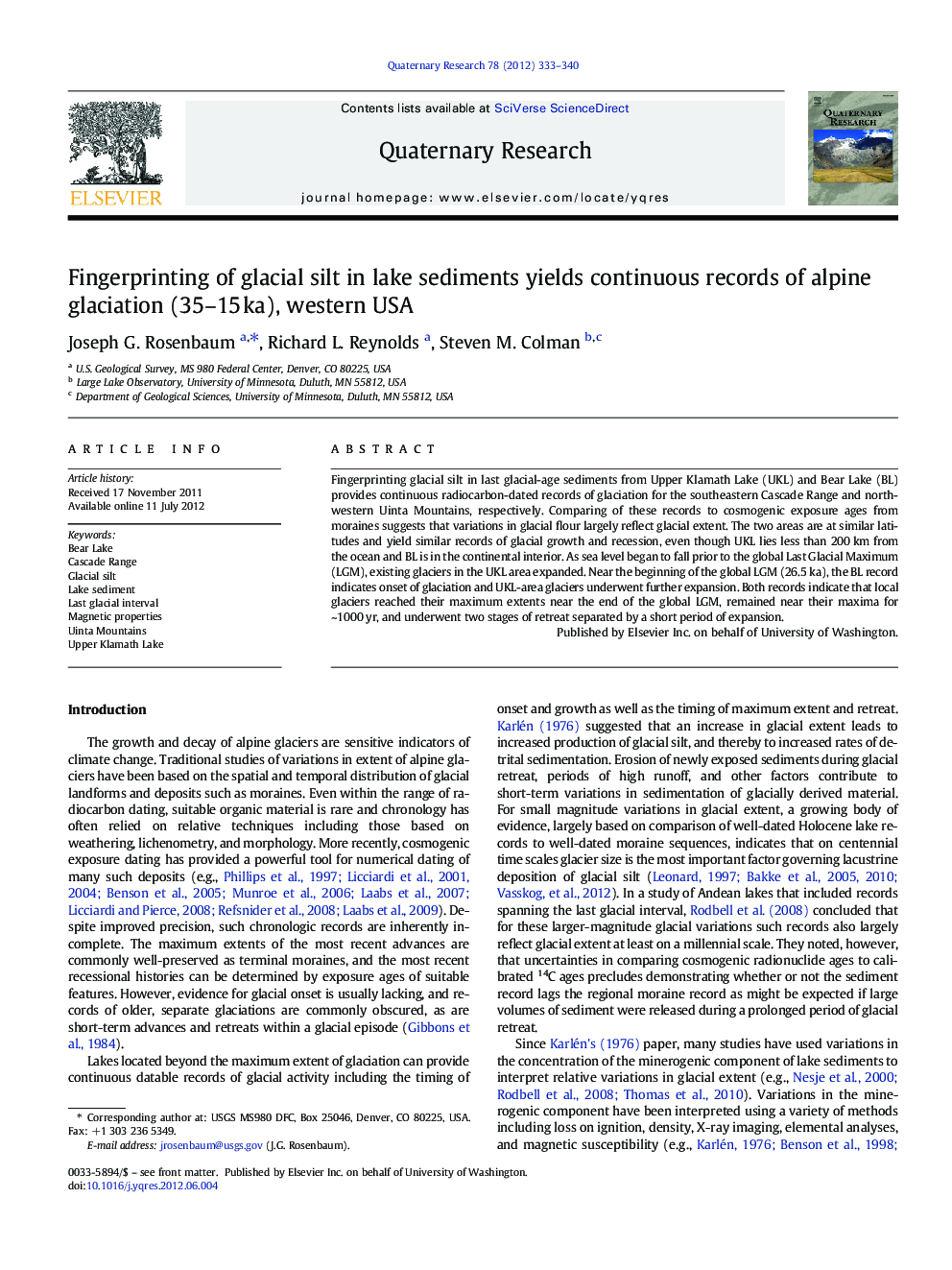| Article ID | Journal | Published Year | Pages | File Type |
|---|---|---|---|---|
| 1045464 | Quaternary Research | 2012 | 8 Pages |
Fingerprinting glacial silt in last glacial-age sediments from Upper Klamath Lake (UKL) and Bear Lake (BL) provides continuous radiocarbon-dated records of glaciation for the southeastern Cascade Range and northwestern Uinta Mountains, respectively. Comparing of these records to cosmogenic exposure ages from moraines suggests that variations in glacial flour largely reflect glacial extent. The two areas are at similar latitudes and yield similar records of glacial growth and recession, even though UKL lies less than 200 km from the ocean and BL is in the continental interior. As sea level began to fall prior to the global Last Glacial Maximum (LGM), existing glaciers in the UKL area expanded. Near the beginning of the global LGM (26.5 ka), the BL record indicates onset of glaciation and UKL-area glaciers underwent further expansion. Both records indicate that local glaciers reached their maximum extents near the end of the global LGM, remained near their maxima for ~ 1000 yr, and underwent two stages of retreat separated by a short period of expansion.
